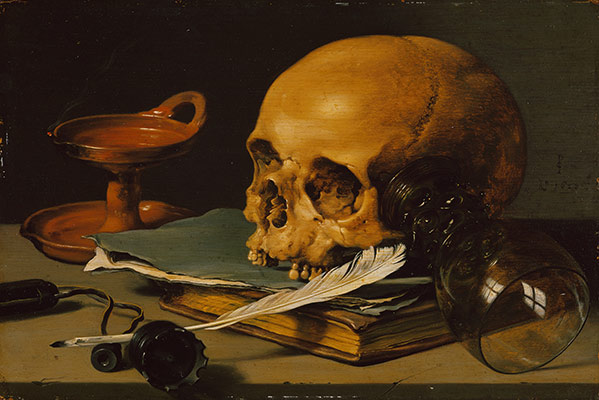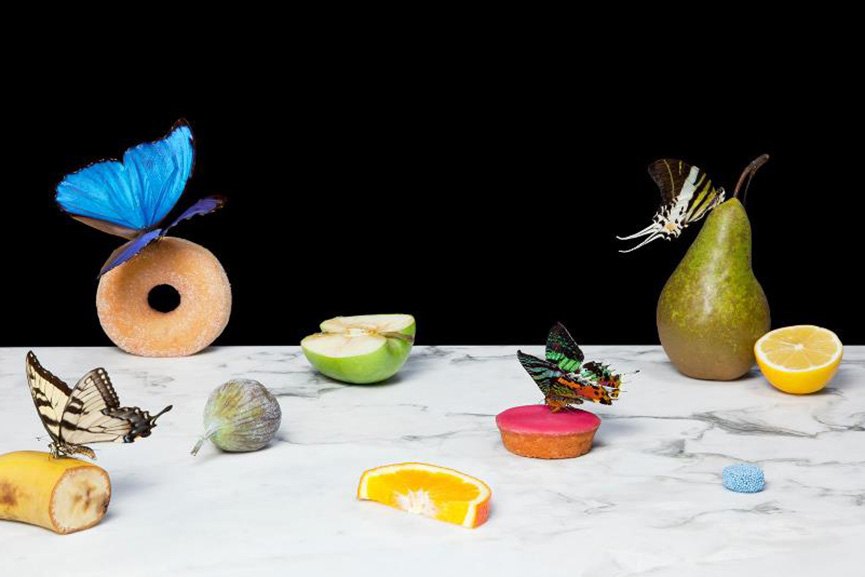Definition
Traditionally, still life is a collection of inanimate objects arranged as the subject of a composition. Nowadays, a still life can be anything from your latest Instagram latte art to a vase of tulips styled like a Dutch Golden Age painting. It is a tradition full of lavish, exotic and sometimes dark arrangements, rich with symbolic depth and meaning. Many of the objects depicted in these early works are symbolic of religion and morality reflecting on the increasing urbanization of Dutch and Flemish society, which brought with it an emphasis on the home and personal possessions, commerce and trade. Paintings depicting burnt candles, human skulls, dying flowers, fruits and vegetables, broken chalices, jewellery, crowns, watches, mirrors, bottles, glasses, vases etc are symbolic of the transience and brevity of human life, power, beauty and wealth, as well as of the insignificance of all material things and achievements.

Where did it come from?
Still life derives from the Dutch word stilleven, coined in the 17th century when paintings of objects enjoyed immense popularity throughout Europe. The energy for this term came as artists created compositions of greater complexity, bringing together a wider variety of objects to communicate allegorical meanings.
A new Medium
Still life was mainly featured in the experiments of photography inventors Jacques-Louis-Mandé Daguerre and William Henry Fox Talbot, as far back as the 1830s. They did this for practical reasons, because the exceptionally long exposure times of their processes prevented the use of living models.
Symbolism and Metaphors
A vanitas is a symbolic work of art showing the transience of life, the futility of pleasure, and the certainty of death, often contrasting symbols of wealth and symbols of ephemerality and death.
The term originally comes from the opening lines of the Book of Ecclesiastes in the Bible- ‘Vanity of vanities, saith the Preacher, vanity of vanities, all is vanity.’
Vanitas are closely related to ‘memento mori’ still lifes which are artworks that remind the viewer of the shortness and fragility of life. Memento mori is a Latin phrase meaning ‘remember you must die.’ These include symbols such as skulls and extinguished candles. However, vanitas still-lifes also include other symbols such as musical instruments, wine and books to remind us explicitly of the vanity, in the sense of worthlessness, of worldly pleasures and goods.
Examples of Still Life

This photograph, which was taken by Matt Collishaw uses the old technique combined with modern-ages ideas. This photograph is his ‘Last meal on death row series of works.’ This appears as a meticulously arranged staged photograph of still life of food, but each image is actually based on death row inmates’ last meals before they are executed. This photo delivers a strong dramatic effect through an excellent use of chiaroscuro.

Dutch photographer Krista van der Niet, whose compositions often include fruits and vegetables mixed with mundane objects such as socks, cloths and aluminium foil, giving it all a contemporary feel. Her photos often carry a feel of satire as well, which references consumerism and popular culture through a clever use of objects within a carefully composed scenery.
Still Life Timeline
- Still life art has existed from the 17th century until the modern day, but in the 19th century , artists adopted photography as a new medium.
- Jacques-Louis Mande Daguerre and William Henry Fox Talbot were some of the first photographers to take still life photos in the 1830s.
- Still life photography followed the same past of using nature Morte, which was dead nature and produced many classical works. Photography even recorded the dead as a reminder of death and mortality.
- Today, photographers produce still life in various ways. It could be things like flower arrangements, old and found objects, food etc.

Good start…but you can improve your blog by adding the following
1. A blog post that explores camera handling skills and lighting techniques that we have used. The Canon camera simulator examples are useful for this too.
2. More description and analysis of images (your own and others) in each blog post that has only images
3. A blog post that clearly shows your initial images in lightroom (like a contact sheet)…this can highlight your selections too (as well as edits)